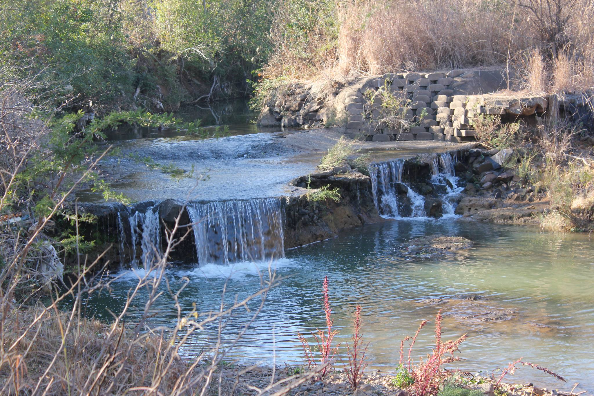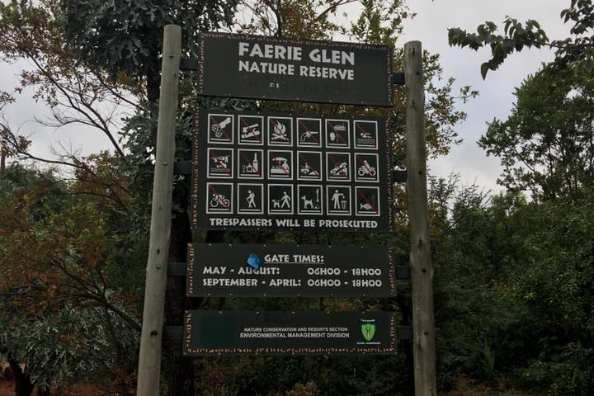Embark on a captivating journey through Pretoria’s hidden gems with our list of “10 Places to Visit in Pretoria.” Pretoria, South Africa’s administrative capital, offers a treasure trove of experiences that showcase the city’s rich history, stunning landscapes, and cultural diversity, from historical landmarks to vibrant nature reserves. Whether you’re a history buff, nature enthusiast, or simply seeking to explore the city’s vibrant soul, our curated selection has something for everyone. Join us on this virtual tour as we uncover the essence of Pretoria through these unique destinations.
1. Pretoria Church Square

Source: Facebook / @Pretoria Church Square Park
Church Square, located in the heart of Pretoria, is an iconic landmark and a gateway to various accommodation options in the city. At its centre, you’ll find a bronze statue of Paul Kruger, the former president of the old Transvaal Republic, and its historical name reflects its role as a gathering place for Holy Communion in the past.
Church Square offers history enthusiasts and architecture lovers a journey through time, showcasing architectural gems from the 19th and 20th centuries. Most of the square’s buildings were constructed between 1887 and 1910. Among these structures, the Palace of Justice on the northern side is notable, as it played a pivotal role in history, hosting the trial and sentencing of Nelson Mandela and other ANC revolutionaries during the historic Rivonia trial.
2. Ditsong National Museum of Cultural History

Source: Facebook / @ DITSONG MUSEUMS OF SOUTH AFRICA
The National Cultural History Museum, located on Visagie Street within the historic Old Mint, is a dynamic centrepiece of Pretoria. Known for its ever-changing and captivating exhibitions, it complements its permanent collections, including ‘reach for the stars,’ a journey through the ages of space exploration, and the ‘rainbow collection,’ which delves into rock art.
As a hub for living culture, the museum shines a spotlight on South Africa’s diverse cultures and the history of its people. It houses many artefacts, manuscripts, documents, records, photographs, and publications that chronicle cultural history across the nation.
3. Moreleta Spruit

Source: Facebook / @Brookside Meander Moreleta Spruit
The Moreleta Spruit, a South African term for a small stream, is a vital tributary of the Hartbees Spruit, winding through Pretoria’s eastern suburbs. Originating from the dolomite hills to the south, this perennial stream is fed by several tributaries. The name “Moreleta” derives from the Sotho language, meaning “brandy bush” or Grewia flava.
In Pretoria, the city is built around three significant rivers, including the Moreleta Spruit. It also plays a key role by flowing through two nature reserves, the Moreleta Nature Reserve and the Faerie Glen Nature Reserve, before seamlessly joining the Hartbees Spruit and ultimately draining into the Roodeplaat Dam.
4. Moreleta Kloof Nature Reserve

Source: Facebook / @ Moreleta Kloof Nature Reserve
Pretoria, just north of Johannesburg in Gauteng province, is a city of both aesthetic beauty and historical significance. It proudly hosts the Moreleta Kloof Nature Reserve, nestled among the picturesque foothills of the Moreleta Kloof. Managed by the Tshwane Metro Council’s Department of Nature Conservation, this 100-hectare reserve was once a dairy farm in the 1800s. The old homestead, now a quaint chapel, and a converted house-turned-restaurant add an irresistible charm and elegance to the entire reserve, making it an ideal venue for various events.
5. Melrose House
Melrose House, a historical museum in Pretoria on Jacob Maré Street, graces the town’s landscape with its elegant presence opposite Burger’s Park. Named after Scotland’s iconic Melrose Abbey, it was constructed in 1886 by prominent businessman George J Heys. This stately structure not only preserves the transition from Victorian to Edwardian architecture but also serves as a cherished historical attraction.
With its roots in colonial South Africa and a link to UK acclaim through its namesake, Melrose House stands as a living testament to the architectural and historical evolution of the past.
6. Nelson Mandela Statue at the Union Buildings

Source: Facebook / @Nelson Mandela Statue, Union Buildings
A towering nine-meter bronze sculpture of Nelson Mandela stands at Pretoria’s Union Buildings, unveiled by Jacob Zuma in December 2013, a day after Mandela’s funeral in Qunu. It’s the tallest bronze portrayal of Mandela, taking pride of place at the very spot where he was inaugurated as South Africa’s first democratically elected president in 1994, replacing the statue of former Prime Minister James Barry Hertzog, now relocated within the Union Buildings.
Notably, the most imposing Mandela memorial is Marco Cianfanelli’s steel construction near Howick, emphasising the enduring legacy of South Africa’s iconic leader.
7. Kruger House

Source: Facebook / @Kruger House, Pretoria
Just a few blocks from Church Square stands the Kruger House Museum, where President Paul Kruger resided from 1883 to 1901 before departing for exile in Europe. This Victorian-style dwelling, an early adopter of electricity and telephone technology in Pretoria, was built using milk-infused cement owing to the perceived poor quality of traditional cement.
Carefully refurbished to mirror the living conditions of President Kruger and his wife Gezina, the unpretentious yet historically rich home showcases various artefacts, including a knife used by the affectionately known “Oom Paul” to amputate his thumb after an accidental shooting. The verandah proudly displays lions presented to Kruger as a birthday gift in 1896 by Barney Barnato, the prominent mining magnate.
8. Groenkloof Nature Reserve

Source: Facebook / @Groenkloof Nature Reserve
Nestled on the southern outskirts of Pretoria, Groenkloof Nature Reserve holds a remarkable place in history as the first nature reserve on the continent, dating back to President Kruger’s 1895 proclamation. Situated within the bustling Fountains Valley, it thrives amidst highrise buildings and the constant hum of city life.
Despite urban sprawl, Groenkloof Reserve has seen significant rehabilitation efforts. The Department of Nature Conservation has diligently restored sections of the reserve for wildlife, ensuring an enjoyable and secure environment for visitors to explore.
9. Gautrain

Source: Facebook / @Gautrain
The Gautrain, a mass rapid transit railway system, has significantly improved travel between Johannesburg and Pretoria, addressing the region’s notorious traffic issues. Since its completion in 2012, the Gautrain has not only eased daily commuting challenges but has also become a favoured choice for both locals and tourists seeking efficient public transportation.
With 24 Electrostar Sets serving ten strategically located stations, including Johannesburg Park Station, OR Tambo International Airport, and Pretoria Station, the Gautrain offers seamless access to the heart of the metropolitan area’s commercial, retail, and entertainment districts. This transformative railway system has redefined convenience and connectivity in Gauteng.
10. Faerie Glen Nature Reserve

Source: Facebook / @Faerie Glen Nature Reserve
Nestled within picturesque surroundings, The Faerie Glen Nature Reserve, conveniently located near Pretoria accommodations, offers a beloved 128-hectare sanctuary with intriguing nature trails. This reserve transitions between Bankenveld and sour bushveld, gracing visitors with abundant Protea blooms on the hillsides.
Home to over 150 bird species, it’s a haven for birdwatchers. Notable species include the European Nightjar, African Black Duck, and Crimson-breasted Shrike. Rarer species like the Corncrake and River Warbler make occasional appearances. Unique trees and insects also captivate nature enthusiasts. Be sure to visit the Plumbago Tea Garden at the reserve’s entrance for refreshments before or after your hike.
Follow us on social media for more travel news, inspiration, and guides. You can also tag us to be featured.
TikTok | Instagram | Facebook | Twitter
Also Read: 10 Best Places to Visit in Hartbeespoort


















